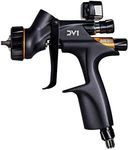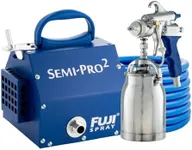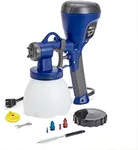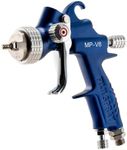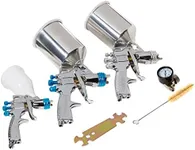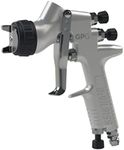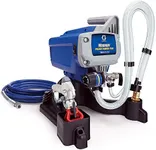Buying Guide for the Best Paint Spray Gun
Choosing the right paint spray gun can make your painting projects faster, smoother, and more enjoyable. The key is to match the spray gun’s features to the type of work you plan to do, whether it’s furniture, walls, cars, or crafts. Understanding the main specifications will help you pick a tool that delivers the finish you want without unnecessary hassle or mess.Type of Spray GunThere are several types of paint spray guns, such as airless, HVLP (High Volume Low Pressure), and LVLP (Low Volume Low Pressure). This spec refers to how the paint is atomized and delivered onto the surface. Airless guns are powerful and good for large surfaces like walls and fences, while HVLP guns are better for detailed work and provide a finer finish with less overspray, making them ideal for furniture or automotive work. LVLP guns use less air and are suitable for smaller compressors. To pick the right type, consider the size and detail of your projects—large, flat areas benefit from airless, while detailed or delicate work is best with HVLP or LVLP.
Nozzle SizeNozzle size determines the thickness and type of material you can spray. Smaller nozzles (around 1.0-1.4 mm) are best for thin materials like stains and lacquers, while medium sizes (1.5-1.8 mm) handle general-purpose paints. Larger nozzles (2.0 mm and above) are needed for thick materials like primers or latex paints. Choose a nozzle size based on the type of paint you plan to use most often—thinner paints need smaller nozzles, and thicker paints need larger ones.
Paint Cup CapacityThis spec tells you how much paint the spray gun can hold at once. Smaller cups (under 500 ml) are lighter and easier to handle, making them good for small or detailed jobs. Larger cups (over 1 liter) let you work longer without refilling, which is helpful for big projects. If you mostly do small crafts or touch-ups, a small cup is fine, but for painting walls or fences, a larger cup will save you time.
AdjustabilityAdjustability refers to the controls available for changing spray patterns, paint flow, and air pressure. More adjustability means you can fine-tune the spray for different tasks, such as switching from a wide fan for large surfaces to a narrow stream for edges or corners. If you want versatility and plan to use the gun for various projects, look for models with easy-to-use adjustment knobs.
Ease of CleaningPaint spray guns need to be cleaned after each use to prevent clogging and ensure a long life. Some models are designed with fewer parts or quick-release features that make cleaning easier. If you value convenience or will be using the gun frequently, choose one that is known for simple disassembly and cleaning.
Power SourceSpray guns can be powered by air compressors, electricity, or batteries. Compressor-powered guns are common and versatile but require a separate compressor. Electric and battery-powered models are more portable and easier to set up but may have less power or capacity. Consider where you’ll be working—if you need portability or don’t have a compressor, electric or battery options are best; for heavy-duty or continuous work, compressor-powered guns are ideal.
